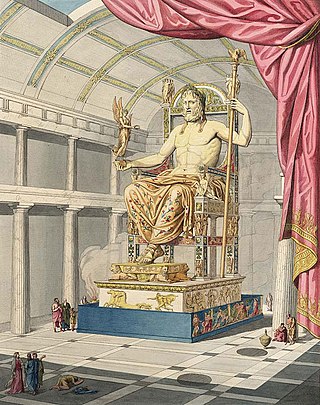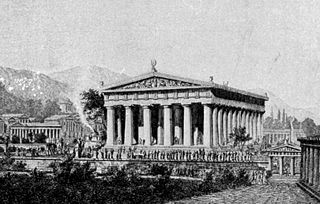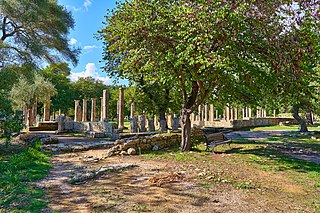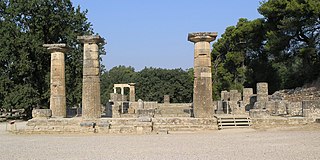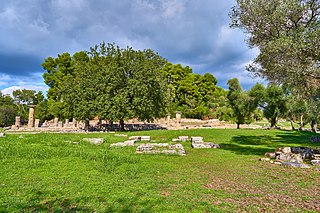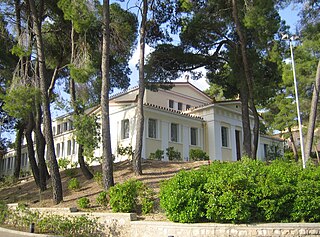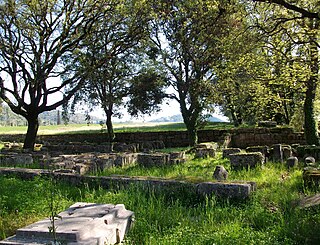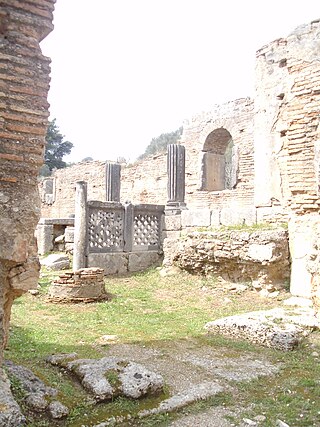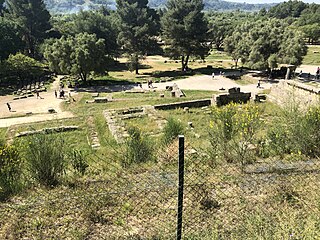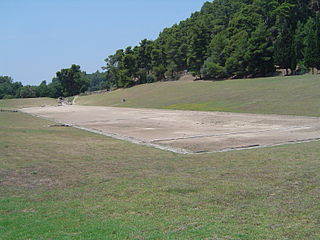11 Sights in Ancient Olympia, Greece (with Map and Images)
Legend
Premium Sights
Book tickets, guided tours and activities in Ancient Olympia.
Guided Free Walking Tours
Book free guided walking tours in Ancient Olympia.
Welcome to your journey through the most beautiful sights in Ancient Olympia, Greece! Whether you want to discover the city's historical treasures or experience its modern highlights, you'll find everything your heart desires here. Be inspired by our selection and plan your unforgettable adventure in Ancient Olympia. Dive into the diversity of this fascinating city and discover everything it has to offer.
Sightseeing Tours in Ancient Olympia1. Olympia
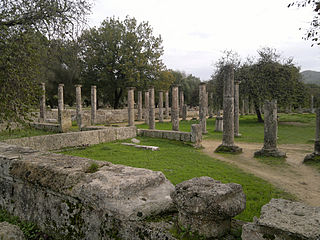
Olympia, officially Archaia Olympia, is a small town in Elis on the Peloponnese peninsula in Greece, famous for the nearby archaeological site of the same name. The site was a major Panhellenic religious sanctuary of ancient Greece, where the ancient Olympic Games were held every four years throughout Classical antiquity, from the 8th century BC to the 4th century AD. They were restored on a global basis in 1894 in honor of the ideal of peaceful international contention for excellence.
2. Statue of Zeus at Olympia
The Statue of Zeus at Olympia was a giant seated figure, about 12.4 m (41 ft) tall, made by the Greek sculptor Phidias around 435 BC at the sanctuary of Olympia, Greece, and erected in the Temple of Zeus there. Zeus is the sky and thunder god in ancient Greek religion, who rules as king of the gods on Mount Olympus.
3. Temple of Zeus
The Temple of Zeus at Olympia was an ancient Greek temple in Olympia, Greece, dedicated to the god Zeus. The temple, built in the second quarter of the fifth century BC, was the very model of the fully developed classical Greek temple of the Doric order.
4. Palaestra
The palaestra at Olympia is the ground or grounds in ancient Olympia where πάλη, Doric πάλα, "wrestling," was taught and performed for training purposes; i.e., "wrestling-school." Two other martial arts were taught there: Greek πυγμή (pygme), Latin pugnus, "fist, boxing," and Greek παγκράτιον, Latin pancration or pancratium, "any method," which was free-style, or hand-to-hand, including grappling, kicking, punching, or any unarmed method whatever, no holds barred. The latter was sometimes deadly, or disfiguring, which indicates that the arts were ephebic, or "soldier" training for prospective citizens of the city-state sponsoring the school, such as Elis, but here combined with prospective candidacy for contention in the games. Be that as it may, none of the games were conducted without rules, umpires, and judges, who did not hesitate to stop contests, fine contenders with in some cases amounts prohibiting future participation, or bar flagrant violators.
5. Temple of Hera
The Temple of Hera, or Heraion, is an ancient Archaic Greek temple at Olympia, Greece, that was dedicated to Hera, queen of the Greek gods. It was the oldest temple at Olympia and one of the most venerable in all Greece. It was originally a joint temple of Hera and Zeus, chief of the gods, until a separate temple was built for him. It is at the altar of this temple, which is oriented east-west, that the Olympic flame is lit and carried to all parts of the world. The torch of the Olympic flame is lit in its ruins to this day. The temple was built in ca. 580 BC, but was destroyed by an earthquake in the early 4th century AD.
6. Pelopion
The Pelopion was a structure at the ancient site of Olympia, Greece. It was the alleged tomb of Pelops, a figure in Greek mythology. It was a monument surrounded by a pentagonal structure. The tomb became an altar for animal sacrifices in Archaic Greece and continued to serve as an altar into the Roman era, until it fell into disuse with the advent of Christianity. It consisted of a mound of ashes and compacted earth, at the peak of which the sacrifice would take place – a black ram was sacrificed here every year in honor of Pelops. In order to get to the top of the altar, priests would carve steps into the mound. This packed earth form of altar was a particularly ancient one, quite unlike the more modern stone altars such as those evidenced at Delphi and the Acropolis of Athens.
7. Museum of the History of the Olympic Games in Antiquity
The Museum of the History of the Olympic Games is located in Ancient Olympia. It hosts objects through which the history of the Olympic Games of Antiquity is presented. The Museum is supervised by the relevant VII Ephorate of Prehistoric and Classical Antiquities.
Wikipedia: Μουσείο της Ιστορίας των Ολυμπιακών Αγώνων (EL), Website
8. Echo Stoa
The Echo Stoa is located within the sanctuary of Zeus in Olympia, Greece. It is part of an ancient archaeological site excavated and preserved by the German Archaeological Institute at Athens. A stoa is a covered walkway or portico, typically colonnaded and open to the public. In ancient Greece, a stoa could be used for a variety of reasons including the selling and display of goods, and religious or public meetings. Aside from Delphi, this sanctuary was the most important one in Greece.
9. Greek Baths
The Greek Baths in ancient Olympia are the earliest baths in the sanctuary and they are situated on the west side, outside the sacred enclosure of the Altis, near the bank of the river Kladeos. They were constructed during the 5th century B.C. and continued to develop throughout their use. In the 2nd century A.D. they were used as the foundation for the construction of the Kladeos Baths. They are called Greek Baths in order to distinguish them from the baths of the Roman period at the same area.
10. Θησαυρός Ζ
The Cybarian Treasury, also known as Treasury V in the study, was an ancient treasury in Olympia, Greece. It gets its name from the fact that it is thought to have been built by the city of Sybar, but the identification is not entirely certain. The ruins of the treasury are located in the municipality of Archaía Olympía in the archaeological site of Olympia, a UNESCO World Heritage Site.
11. Stadium
The stadium at the archaeological site of Olympia in Greece is located to the east of the sanctuary of Zeus, outside the sacred precinct of Altis. It was the venue for many of the sporting events of the Olympic Games, as well as the Heraion women's games.
Share
How likely are you to recommend us?
Disclaimer Please be aware of your surroundings and do not enter private property. We are not liable for any damages that occur during the tours.
